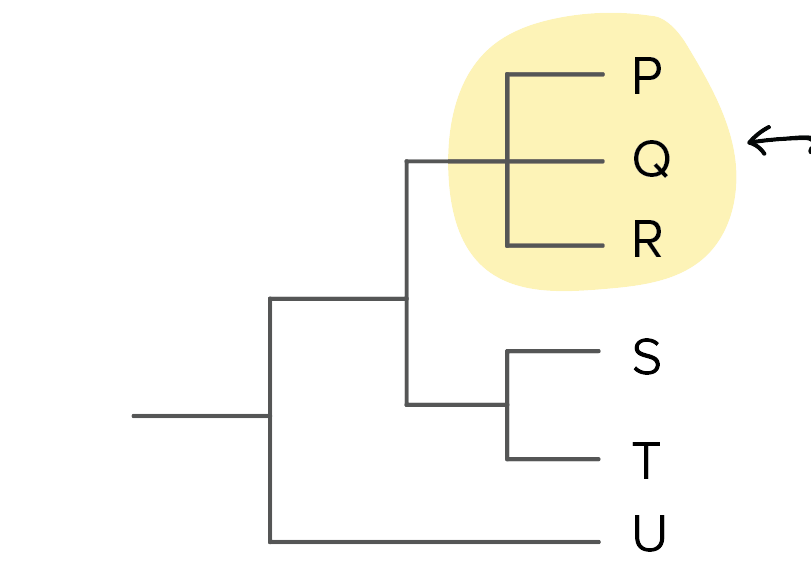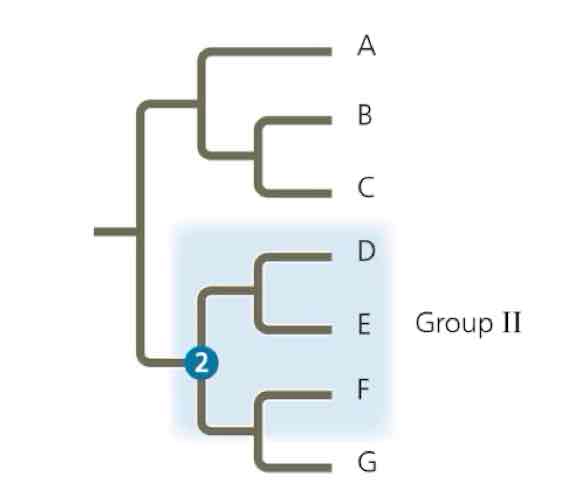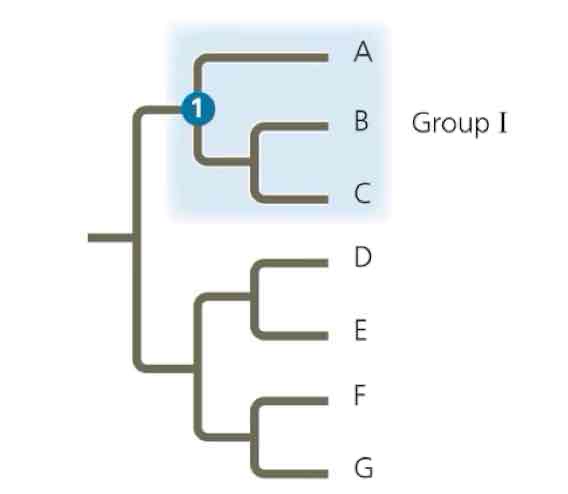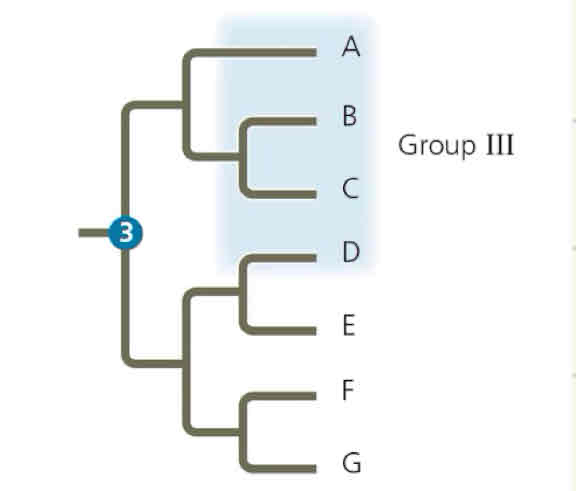BIO ONE! uuuuughhhhhhhhhhhh
1/43
There's no tags or description
Looks like no tags are added yet.
Name | Mastery | Learn | Test | Matching | Spaced |
|---|
No study sessions yet.
44 Terms
photoautotroph, give an example
an organism that can make it’s own food and does not require the nutrients from other organisms
examples of these are plants who use the light from the sun to make glucose
chemoheterotroph, give an example
a chemotroph is an organism who cannot make food on it’s own and requires the nutrients from other species as a source of food/energy
ex. animals such as humans
What do mammals do? What are the major groups of mammals (3)
Nurture their offspring by feeding milk
Monotremes
Marsupials
Placental
What do Marsupials do?
give birth early and nurture their offspring in a pouch
ex. kangaroos
What do Monotremes do?
give birth by laying eggs
ex. platypus
What do placentals do?
Offspring is nurtured in the biological mother’s body until the baby is self-sufficientnt enough to survive. Allows to care for the offspring more easily like this.

what is the yellow called
polytomy

What is a polytomy
A node were multiple lineages descend because theres uncertainty about the evolutionary relationship
What are analogous traits? in the American and Australlian moles?
Analogous Traits are similar traits in different species that were evolved independently
ex. mole-like appearence
What are homologous traits? in the American and Australian moles?
Homologous traits are shared traits that were derived from a common ancestor
ex. digging behaviours
Taxonomy
studying and classifying species into groups
Phylogeny
tracking evolutionary relationship between species
Cladistics
an approach which classifies organisms based on it’s ancestral relationships

What type of group is this clade
Paraphyletic (it’s missing the G species)

What type of group is this clade
Monophyletic
includes all the species in the clade and no species outside of the common ancestor is included or left out

What group is this clade
Polyphyletic
it includes all the species in a monophyletic group but adds in another species that didn’t descend from the same recent common ancestor
What are the two types of Homologous Genes?
Orthologous and Paralogous Genes
What are Orthologous Genes? Give an example
Similar genes found in different species due to speciation events
Only found after speciation occurs (the gene found in two different gene pools)
ex. the cytochrome c gene in humans and dogs
Gives us information about the speciation history and when two species diverged from a common ancestor (?)
What are Paralogous genes? Give an example
Simillar genes found in different species due to dupliation events
ex. mice and the olfactory senses gene
What is a molecular clock
method for estimating the time needed for an evolutionary change
based on observations that some regions of a gene may change at a constant rate
Molecular clock related to Orthologous genes
The number of nucleotide substitutions in a gene is related to the time passed since the gene has diverged from the common ancestor
ex. the more nucleotide substitutions, the more times it has diverged since the common ancestor who had the original gene
Molecular clock related to Paralogous genes
the number of nucleotide substitutions is proportional to the passed time since the ancestorial gene was duplicated
ex. more nucleotide substitutions = more time passed since the first duplication event of the gene
What are the 3 domains of life. Draw a phylogenetic tree
Bacteria, Archea, Eukaryotes
Which type of homologous genes should a taxonomist use to build a phyl. tree
They should use orthologous genes.
orthologous genes are simillar genes found in different species due to speciation events
this type of homologous gene tells us the evolutionary history of speciation within a species and when they diverged from the common ancestor
What are the classes of taxonomy?
Kingdom, Domain, Phylum, Class, Order, Family, Genus, Species
How do you interpret phylogenetic trees? What do they mean, and what do they not mean?
Phylogenetic trees gives us information about a common ancestor and the lineages that diverged from the c.a. When looking at a specific species it can tell us it’s evolutionary history
Unless stated otherwise, they cannot tell us the time of when the diverging happened and it does not mean that species A evolved from species B. species A and B both evolved from a common ancestor that is a completely different species, Species C.
What makes a certain 'trait' of an organism good for building phylogenetic trees? How do
you tell apart a good trait and a bad trait?
Good traits for building phylogenetic trees come from considering the species genotypically rather than phenotypically.
Different homologous genes evolve at different speeds. How is this important when a molecular taxonomist builds phylogenetic trees using these genes?
Differences in clock speed depend on what the gene or mutation does. The speed will vary depending on if it’s beneficial or harmful. If the gene is selectively natural, meaning there are no benefits or downsides, the rate of which the gene evolves will also be constant.
Taxonomists must consider whether the gene is natural or not as tracking the evolutionary history based on a beneficial/harmful gene may be influenced by other factors such as natural selection. If the gene is natural, the speed of evolution will be constant and then they can ensure that there are no confounding factors
What is a maximum parsimony?
When there are multiple explanations for a phenomenon, the simplest explanation is usually the best
What do you mean when a scientists resolve a phylogenetic tree using maximum parsimony?
Maximum parsimony is when there are multiple explanations for a phenomenon but the best explanation to go off of is the simplest one.
What causes differences in clock speed?
mutations being selectively natural. Having no benefits or downsides
What is the causative agent of tuberculosis
the bacteria: Mycobacterium tuberculosis
What is the causative agent of AIDS
HIV
What is the causative agent of common skin and respiratory infections?
the bacteria Staphylococcus aureus
What is the causative agent of mpox
Monkey Pox Virus
What is the name of COVID-19?
SARS-CoV-2.
Severe Acurate Respiartory System Coronavirus-2
The causative agent of covid-19
Covid-19 is just a symptom of the virus, not the name of the virus itself
What are the other two cases of coronvirus?
Mers-CoV and SARS-CoV-1
What does the predator/prey dynamic do? What are examples of them?
can cause change in population size
Predator: Lynx
Prey: Snowshoe Hare
Explain photosynthesis and the food chain
primary producer (ex. tree) converts CO2 into sugars. Byproduct of this process produces O2 which allows other organisms to breathe
Consumers of primary producer (ex. deer) consumes the sugars from the primary producer and releases CO2 through respiration
Meat eaters consume (2) and CO2 is released by respiratory systems and metabolizing the organic molecules
Primary producers pick up the CO2.
What are the 4 international organizations that govern nomenclature of species
International Code of Zoological Nomenclature (ICZN)
International Code of Nomenclature for algae, fungi, and plants (ICN)
International Code of Nomenclature of Prokaryotes (ICNP)
International Committee on Taxonomy of Viruses (ICTV)
Explain Cheetahs Ancestral History
Cheetahs have partial retractable claws while organisms in the Felidae group have retractable claws which is used for hunting
This doesn’t mean that cheetah is not in the group as it shares common ancestor with the other cats despite this morphological difference
What is a sister taxa?
group of organisms that share an immediate common ancestor that is not shared by any other species in the tree